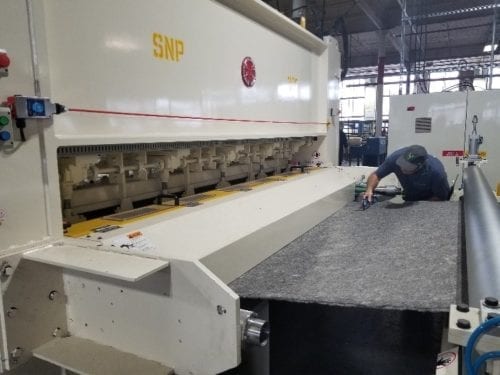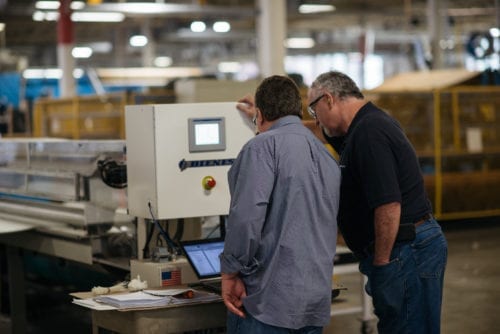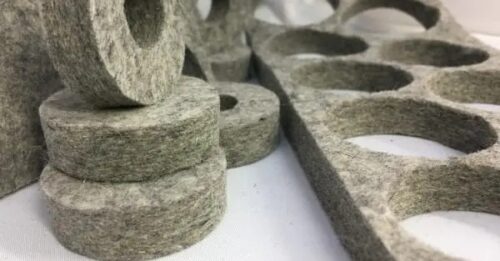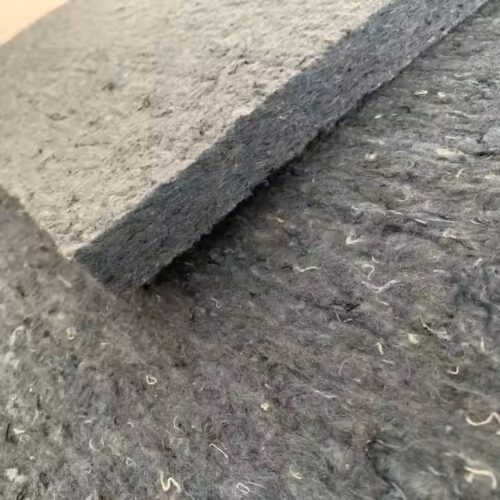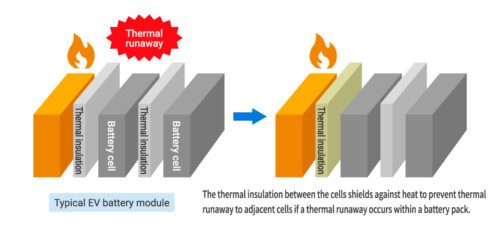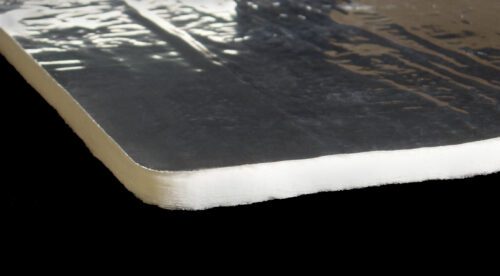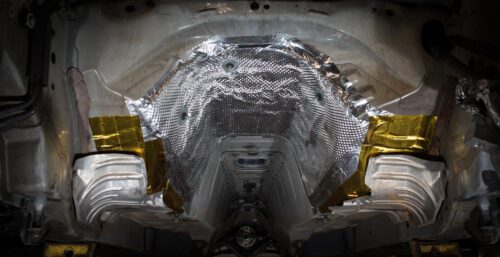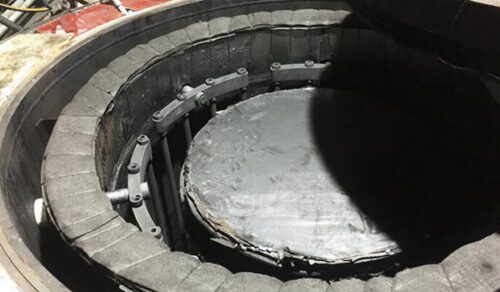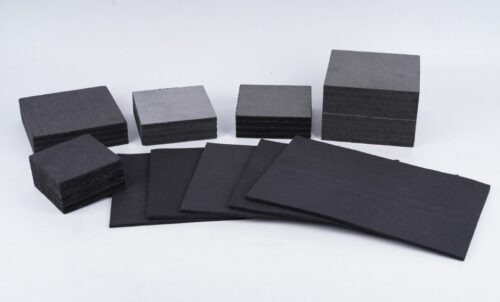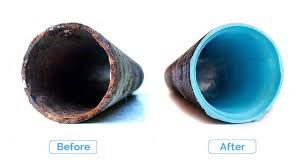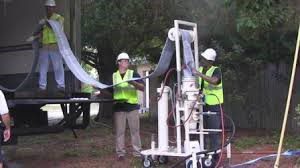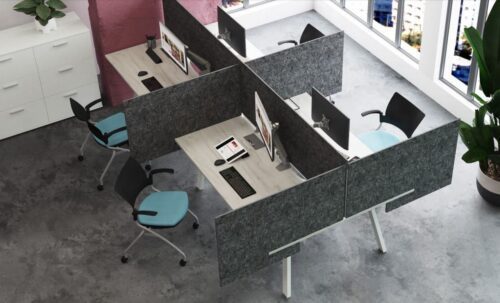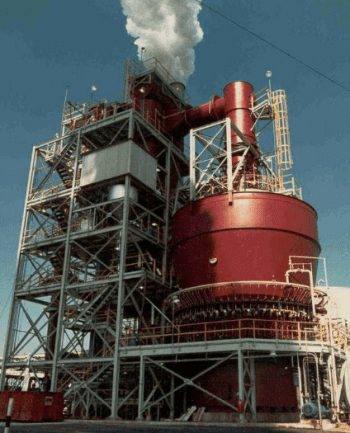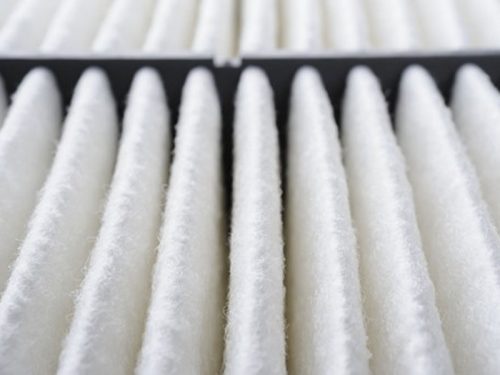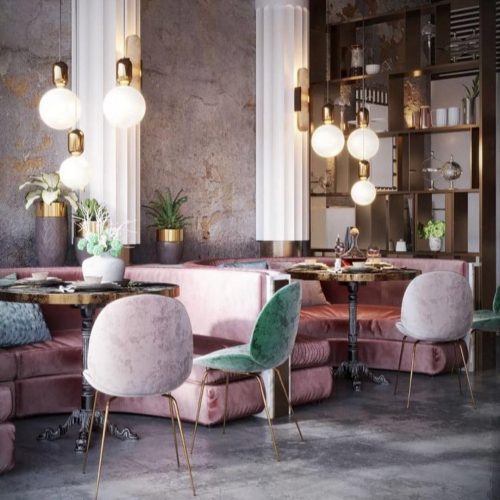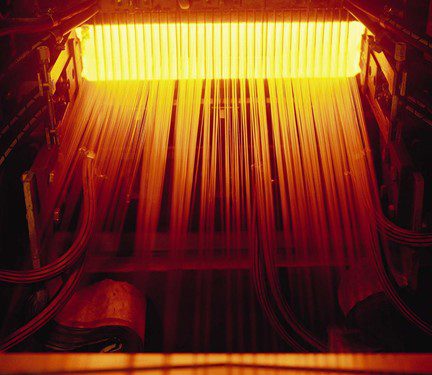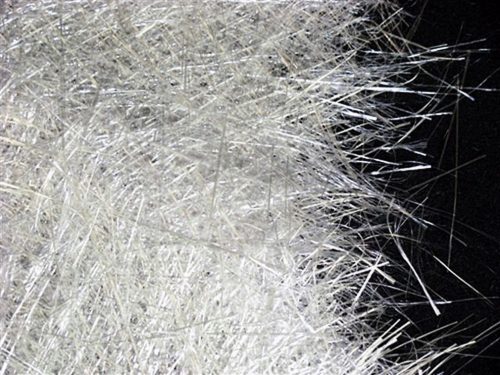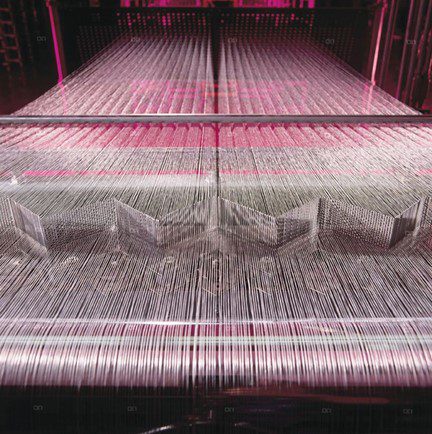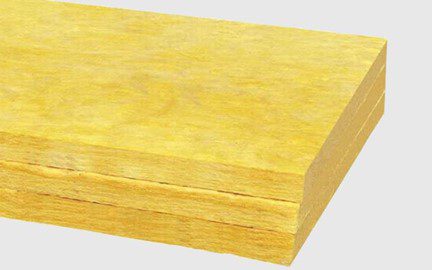Category Archive: Informational
Company Overview
Industry: Automotive Acoustic Solutions
This automotive acoustic company is a leading producer of acoustic components for major automotive manufacturers in the U.S. Their expertise in sound-dampening and insulation materials plays a crucial role in enhancing vehicle comfort and performance.
The Challenge: Overcoming Production Constraints
Our client faced a significant production bottleneck that was limiting their ability to scale operations efficiently. To maintain high production efficiency while ensuring quality, they sought a reliable material solution that could seamlessly integrate with their existing manufacturing processes.
Why BIT?
When searching for a supplier that could meet their needs, this automotive acoustic company chose BIT for its ability to replicate the required product effectively. The decision was based on BIT’s proven expertise, reliability, and excellent communication throughout the process.
Solution: Implementing BIT’s Thermablend Rolls
Our client incorporated BIT’s Thermablend rolls into their production line. However, due to their unique manufacturing setup—where multiple supplier products are combined, adjustments were necessary to ensure smooth implementation. BIT provided continuous support, working closely with the client to adapt the material for optimal integration.
Seamless Implementation with BIT’s Support
- Customization & Adaptation: The Thermablend rolls required modifications to align with their multi-supplier production process.
- Excellent Communication: BIT’s team ensured clear and prompt communication at every stage.
- Ongoing Assistance: BIT remained responsive and helpful, addressing any concerns quickly to facilitate a smooth transition.
The Results: Increased Production Efficiency
Since integrating BIT’s Thermablend rolls, our client has seen measurable improvements, including:
- Freed-up production capacity—allowing the plant to focus on high-run materials.
- Improved operational efficiency—streamlining processes and reducing constraints.
While specific cost savings and environmental impact metrics were not provided, the increased capacity and efficiency have positioned them for better scalability and productivity.
Why Bouckaert Stands Out
BIT has proven to be more than just a supplier—we are a strategic partner for our client. The key factors that set BIT apart include:
- Outstanding communication—ensuring project needs are well understood and met.
- Commitment to customer success—actively assisting in process adjustments and problem-solving.
- Alignment with business goals—helping our client optimize production by focusing on core materials.
Future Collaboration
Given the success of this partnership, this automotive acoustics operation continues to consider BIT for future projects and would confidently recommend them to other automotive manufacturers seeking reliable textile solutions.

In industries where precision matters, quality assurance in nonwoven felts is essential. At Bouckaert Industrial Textiles (BIT), we understand that our high-performance nonwoven felts are often used in mission-critical applications, from automotive heat shields to oil and gas pipeline insulation. Quality is central to everything we do. Through stringent testing, real-time monitoring, and customized solutions, we ensure each roll of felt meets the highest industry standards. Our clients rely on our products, and we’re committed to delivering consistency and reliability. Let’s explore how BIT maintains its commitment to nonwoven felts quality assurance across every product and customer need.
Adherence to Industry Standards: Quality Built on ASTM Guidelines
At BIT, we closely follow recognized industry standards. Our manufacturing processes for nonwoven felts adhere to ASTM guidelines, which ensure that our products meet precise specifications for thickness, strength, and durability. Our clients can count on us to consistently provide a high-quality service.
By following ASTM guidelines, BIT meets and often exceeds the expectations of clients in high-performance industries like automotive, aerospace, and oil & gas. This commitment to standards ensures that each product performs reliably, even in demanding environments with heat, stress, and harsh conditions. Our adherence to these benchmarks guarantees product consistency.
The Rigorous Testing Behind Every Product
Nonwoven felts quality assurance at BIT doesn’t just happen. It’s the result of deliberate and systematic testing to avoid any variables that might compromise product performance. Our approach is multifaceted, comprehensive, and leaves no detail overlooked.
For every roll of nonwoven felt we produce, we perform regular quality checks, including:
- Thickness Testing: We measure thickness to meet customer specifications. Whether used for vehicle insulation or pipeline systems, thickness consistency is critical.
- Weight Consistency: The weight of our felts indicates density and durability. In applications like heat shields, any weight variations can affect insulation and structural integrity.
- Surface Quality: We inspect each roll’s surface to ensure it’s free of defects. Precision is essential, especially in aerospace industries.
These tests are part of our larger commitment to quality assurance in nonwoven felts. Every batch undergoes multiple testing rounds to ensure it meets or even exceeds, client expectations. We use state-of-the-art equipment like Ames gauges, Guston Bacon gauges, and Instron machines to achieve the highest accuracy in each test.

Custom Solutions for Client-Specific Quality Requirements: A Case Study in Precision
At BIT, we know that one-size-fits-all approaches don’t work in high-performance industries. That’s why we tailor our quality control processes for each client. Our work with a major oil and gas pipeline insulation manufacturer demonstrates this approach.
This customer uses our nonwoven felts as a substrate for their aerogel-based insulation. It’s a specialized application where any variation in thickness or weight creates issues. If the felt is too thick or too thin, it affects the aerogel application, leading to waste. In industries like oil and gas, inefficiencies are not just inconvenient—they’re costly.
To address this, BIT developed a custom quality control and reporting process for this client. We implemented a system that measures thickness and weight every 50 yards. This data is entered into our quality reporting software. If measurements deviate from nominal values, the system alerts supervisors, allowing us to correct issues immediately.
This real-time quality assurance process lets our client adjust their machinery based on each roll’s specific thickness and weight data. In the first year of working with BIT, this client saved over $300,000 in yield losses. The savings came from our ability to maintain consistent quality.
This example shows how BIT goes beyond standard practices to meet each customer’s unique quality needs. By customizing our processes, we help clients achieve efficiency and reduce waste.
The Role of Technology in Quality Assurance
At BIT, we rely on advanced technology to monitor and test our products throughout the manufacturing process. Key tools in our quality assurance arsenal include:
- Ames Gauges and Guston Bacon Gauges: These gauges measure felt thickness. We choose the gauge type based on product density to ensure precise readings.
- Durometer Tests: These tests assess the hardness and flexibility of our felts, confirming that they meet mechanical requirements for applications like thermal insulation.
- Deflection Testing: This test evaluates felt resilience under pressure, simulating real-world stresses. The ability to withstand pressure is crucial in applications such as automotive heat shields and industrial pipelines.
- Instron Machines: Instron machines allow us to perform multiple mechanical tests, including tensile strength and elongation, which ensure our products’ durability in high-stress environments.
Through this technology, BIT maintains real-time quality assurance. We catch issues early in the process, ensuring each product meets our standards before reaching the customer.

Sustainability Through Quality: Efficient Processes That Reduce Waste
At BIT, we believe that sustainability and quality are linked. By making products right the first time, we reduce waste and increase efficiency. High-quality production means fewer defective products, less rework, and a streamlined manufacturing process. These benefits translate to lower energy consumption and reduced material waste.
Quality products also mean longer-lasting performance for our customers. This reduces the need for replacements and repairs, saving both time and money. Reducing the environmental impact of production and shipping also aligns with our commitment to eco-friendly solutions. As sustainability becomes more critical, BIT’s focus on quality supports eco-friendly industrial practices.
Conclusion: BIT’s Uncompromising Commitment to Nonwoven Felts Quality Assurance
At BIT, quality is more than just a buzzword. It’s the foundation of everything we do. From our adherence to ASTM standards to our use of advanced technology and customized solutions, we ensure that every product that leaves our facility meets the highest standards. Whether we’re producing nonwoven felts for automotive heat shields, aerospace insulation, or oil and gas pipelines, our commitment to quality ensures that our clients receive reliable materials.
Through proactive testing, real-time tracking, and efficiency, BIT continues to lead in high-performance nonwoven felts. As industries evolve and demand more from their materials, BIT stands ready to meet those challenges with the same dedication to quality that has defined our success.
Learn more about ASTM standards for nonwoven materials and how they support quality in manufacturing.
Explore BIT’s product range of high-quality nonwoven felts for mission-critical applications.
As industries demand more eco-friendly and natural materials, natural fiber nonwoven felts are gaining traction across various sectors. At Bouckaert Industrial Textiles (BIT), we focus on producing high-performance needle-punched felts from 6 oz per square yard and up. Our felts meet the growing demand for sustainability while maintaining quality.
Explore how natural fiber nonwoven felts, including wool, rayon, jute, hemp, and cotton, are transforming industries from automotive to agriculture.
1. Wool Felts: Natural Fiber, Eco-Friendly, and Durable

Wool felts have natural properties like insulation, moisture-wicking, and flame resistance, making them a go-to solution across industries. Their ability to absorb sound, insulate against heat, and resist fire make wool felts a sustainable choice for both industrial and residential applications.
A. SAE/Buzz, Squeak, and Rattle (BSR) Applications

In the automotive industry, wool felts are used in BSR testing to reduce friction and dampen vibrations. This reduces wear and tear on mechanical parts, enhancing durability and sustainability. Automakers use wool felts in sensitive areas like door panels and instrument clusters to reduce noise, contributing to a quieter and more comfortable driving experience.
B. Equestrian Saddle Pads
Wool felts are widely used in saddle pads to provide comfort, moisture control, and insulation for horses and riders. Wool’s moisture-wicking properties help keep the horse’s back dry, and its natural cushioning reduces pressure points, making it a superior material for equestrian equipment.
C. Mattress and Furniture Padding

Wool felts are used in the mattress and furniture industries for padding and flame protection. Wool’s natural flame retardancy makes it a safer choice compared to synthetic materials. Its breathability and softness provide added comfort, which is why it’s increasingly being used in luxury mattresses and eco-friendly furniture designs.
In the furniture industry, wool felts are used as padding in chairs, sofas, and upholstered goods. With consumers demanding more sustainable furniture options, wool’s renewable and biodegradable qualities make it an attractive alternative to synthetic foams.
D. Undercarpet Padding

For interior applications, wool felts serve as under-carpet padding, offering noise reduction and comfort while being naturally fire-resistant. Wool’s durability ensures that carpets last longer and provide better insulation, both thermal and acoustic.
E. Acoustic Panels and Batts for Office Interiors
BIT is pushing into the market for wool acoustic panels and batts in office interiors, providing sustainable sound insulation for modern workspaces. Wool’s natural sound absorption and flame retardancy make it ideal for open-plan offices and meeting rooms. As businesses seek quieter, more productive environments, sustainable materials like wool are gaining popularity in interior design.
In green building projects, wool is increasingly being used for acoustic panels and insulation. Its ability to regulate temperature and absorb noise makes it an excellent material for reducing energy consumption and improving workplace comfort.
2. Rayon Felts: Versatile Natural Fiber Solutions
Rayon felts offer excellent sustainability and performance for a range of industries. Derived from natural sources like wood pulp, rayon provides a renewable, biodegradable option for a variety of applications.
A. Hydroponic Growing Media
Rayon felts are increasingly used as growing media in hydroponic systems. These felts provide water retention and root support, making them ideal for urban and vertical farming. The ability to hold moisture while remaining lightweight makes rayon felts suitable for growing vegetables and herbs in controlled environments.
In hydroponic systems, where traditional soil is replaced by nutrient-rich water, rayon felts provide an essential structure for plant roots to thrive. Rayon’s biodegradable nature ensures that it doesn’t leave behind harmful waste, making it an ideal solution for environmentally conscious urban farms.
B. Medical and Orthopedic Uses
Rayon felts are used in medical dressings and orthopedic padding for their softness, absorbency, and biodegradability. In the medical industry, rayon felts are used in wound care products, such as bandages, where their softness and moisture retention help promote healing.
In orthopedic applications, rayon felts provide cushioning for devices like prosthetics and braces. The ability of rayon to conform to the body and its hypoallergenic properties make it a superior material for sensitive medical uses. Its biodegradability ensures that it reduces environmental impact once discarded.
3. Cotton Felts: Sustainable Natural Fiber for Padding
Though not a focus at BIT due to flammability issues, cotton felts, including recycled shoddy, are still a popular natural fiber option across industries. Cotton, particularly recycled cotton, is being used more frequently in the furniture and bedding industries as consumers demand more eco-friendly options.
A. Mattress and Furniture Padding
Recycled cotton felts are widely used in the mattress and furniture industries for padding. Offering a more sustainable alternative to synthetics, cotton felts provide comfort and breathability. Recycled cotton (often referred to as shoddy) is made from post-consumer denim and other fabrics, giving it a second life as padding material.
In mattresses, cotton felts serve as a cushioning layer that also helps regulate temperature. In furniture, these felts are often used in upholstery, contributing to more eco-conscious designs without sacrificing comfort or durability.
B. Insulation from Recycled Denim

Recycled cotton felts (shoddy), especially from denim, are used as thermal and acoustic insulation in eco-friendly construction projects. Denim-based felts are highly effective at absorbing sound and regulating heat, making them ideal for use in walls, floors, and ceilings in sustainable buildings.
4. Jute and Hemp: Natural Fibers for Automotive and Packaging
Jute and hemp fibers are becoming prominent in the automotive industry and for sustainable packaging. These bast fibers offer strength, flexibility, and biodegradability, making them ideal for applications where synthetic materials might otherwise be used.
A. Automotive Molded Parts and Acoustics

Jute and hemp fibers are increasingly used in the automotive industry for molded parts and acoustic insulation. These fibers provide lightweight yet durable solutions for door panels, trunk liners, dashboards, and other internal components. The stiffness and strength of jute and hemp make them ideal for producing moldable, environmentally friendly parts that maintain structural integrity under stress.
Hemp and jute are also effective in reducing cabin noise, contributing to a more comfortable driving experience. Automakers are looking for alternatives to petrochemical-based products, and bast fibers are offering a sustainable solution without compromising performance.
B. Eco-Friendly Packaging and Insulation
Jute and hemp are used in eco-friendly packaging and insulation, offering biodegradable and cost-effective alternatives for various industries. As packaging materials, they provide cushioning and support, while also being compostable at the end of their lifecycle.
C. Agricultural Textiles
Hemp and jute felts are used in agricultural textiles for erosion prevention and weed control. These materials decompose into the soil and enrich it with organic matter. Jute and hemp-based textiles are ideal for use in landscaping, farming, and other outdoor applications where biodegradability is a key concern.
5. Additional Applications for Natural Fiber Nonwoven Felts
Natural fiber nonwoven felts are also used in niche applications, such as:
- Soundproofing in Green Buildings: Wool, rayon, and cotton felts are used for soundproofing walls in sustainable construction projects.
- Protective Packaging for Fragile Goods: Wool and cotton felts are used to protect fragile items like electronics and glass during shipping. These materials provide cushioning without relying on plastic or foam.
Conclusion: The Future of Natural Fiber Nonwoven Felts
At Bouckaert Industrial Textiles, we are committed to producing high-quality, eco-friendly natural fiber nonwoven felts to meet the growing demand for sustainable materials. From wool felts used in automotive and equestrian applications to rayon felts supporting hydroponic agriculture, we ensure our materials contribute to a greener future.
As industries continue to innovate and search for greener solutions, natural fibers like wool, rayon, and hemp will play a crucial role in providing durable, eco-friendly felts for a wide range of applications.
Read more about natural fiber uses in sustainable applications here.
Learn more about our SAE Felts on our product page.

The electric vehicle (EV) industry is experiencing rapid growth, fueled by advancements in battery technology, sustainability demands, and governmental pushes toward greener transportation. As manufacturers continue to refine the components that make EVs efficient and reliable, one often overlooked material is playing an essential role—nonwoven felts in electric vehicles. These materials, known for their versatility, durability, and thermal resistance, are becoming key components in the design and manufacturing of electric vehicles.
From thermal management in battery systems to acoustic insulation and lightweighting, nonwoven felts are integral to addressing the unique challenges presented by EV technology. This article explores how these materials are shaping the future of electric vehicle innovation.
Nonwoven Felts in Thermal Management for Electric Vehicles
One of the most critical challenges in electric vehicle design is managing the significant amount of heat generated by the lithium-ion batteries used to power these vehicles. Excessive heat not only reduces battery efficiency but also poses safety risks, such as thermal runaway, where overheating can lead to fire hazards.
Nonwoven felts, particularly those infused with aerogels or other high-performance insulating materials, are playing a vital role in mitigating these risks. These felts are often used as thermal barriers between the battery cells, helping to control the heat generated during charging and discharging cycles.
Aerogel-Infused Nonwoven Felts for Battery Insulation

Aerogels are among the most effective insulating materials available today, known for their extremely low thermal conductivity. When combined with nonwoven felts, these materials create lightweight, flexible thermal barriers that can maintain the battery’s operating temperature within safe and efficient limits. This is particularly crucial as EVs push for longer ranges, requiring batteries to hold and discharge more energy without compromising safety.
Additionally, nonwoven felts help prevent thermal propagation—the spread of heat between cells—by acting as a barrier in the event of a single cell failure. This localized control of heat can reduce the risk of a total battery failure and extend the vehicle’s operational safety. Read more about managing thermal runaway in EV batteries.

Acoustic Insulation for Quieter EV Experiences
Another challenge that EV manufacturers face is the reduction of noise. Unlike traditional internal combustion engine (ICE) vehicles, which generate significant noise through the engine and exhaust system, EVs are nearly silent. While this is often marketed as an advantage, the absence of engine noise means that other, previously masked sounds, such as road noise, tire hum, and wind, become more noticeable.
Nonwoven felts in electric vehicles are well-suited to address these acoustic challenges. Their dense, fibrous structure makes them ideal for sound absorption. In EVs, nonwoven felts are being used in areas like:
- Interior cabin insulation: To minimize the transfer of external noise into the cabin.
- Underbody soundproofing: To dampen road and tire noise, improving passenger comfort.
- Engine bay and electric motor housing: While electric motors are quieter than traditional engines, they still generate high-frequency noise that can be disruptive. Nonwoven felts help dampen this sound effectively.
Incorporating nonwoven felts into EV designs for acoustic management not only enhances the driving experience but also helps manufacturers meet increasingly stringent noise regulations, particularly in urban environments.
Lightweighting with Nonwoven Felts in Electric Vehicles
One of the most important goals for EV manufacturers is reducing the overall weight of vehicles. Lighter vehicles are more energy-efficient, which directly translates into longer driving ranges—a key factor in consumer acceptance of EV technology. Nonwoven felts in electric vehicles offer a versatile, lightweight solution for a variety of applications where traditional materials would add unnecessary bulk.
Replacing Traditional Insulation Materials
In conventional vehicles, materials such as heavy foam or plastic-based insulation are commonly used for thermal and acoustic management. However, these materials add weight, which can reduce fuel efficiency or, in the case of EVs, limit the vehicle’s range. Nonwoven felts, on the other hand, provide comparable or better performance at a fraction of the weight.
Lightweight Heat Shields

Nonwoven felts are also used in lightweight heat shields for electric motors and battery components. These materials offer the required thermal protection without the weight penalty associated with metal heat shields. This is especially important as manufacturers push the boundaries of EV performance, where weight savings can significantly impact range and efficiency.
Sustainability and Recyclability of Nonwoven Felts
As the world shifts towards more sustainable practices, the recyclability and environmental footprint of materials used in manufacturing are becoming increasingly important. Nonwoven felts, especially those made from recycled fibers or natural materials, offer a more sustainable alternative to traditional insulation and structural components.
EV manufacturers are under pressure to not only reduce the emissions of their vehicles but also to lower the environmental impact of their entire production process. By incorporating nonwoven felts, manufacturers can contribute to a circular economy, where materials are reused and recycled, reducing the overall demand for virgin materials.
BIT’s nonwoven felts, for example, are produced using efficient manufacturing techniques that minimize waste and energy consumption, aligning with the broader goals of the electric vehicle industry to create more sustainable products.
Future of Nonwoven Felts in EV Applications
As electric vehicle technology continues to evolve, so too will the applications for nonwoven felts. Future innovations may include:
- Advanced thermal management systems: Nonwoven felts combined with phase change materials (PCMs) or smart textiles that actively respond to temperature changes.
- Enhanced acoustic solutions: Felts that incorporate nanotechnology or smart fibers to further enhance sound absorption and noise-canceling properties.
- Bio-based nonwoven felts: As sustainability becomes an even greater focus, bio-based and biodegradable nonwoven felts will likely play a larger role in EV manufacturing.
The versatility, lightweight properties, and superior insulation capabilities of nonwoven felts make them an essential material in the ongoing innovation of electric vehicles. From increasing range to improving safety and comfort, these materials will continue to be a crucial part of the EV revolution.
Conclusion
As the electric vehicle market accelerates, nonwoven felts are poised to become even more integral to vehicle design and performance. Their ability to provide superior thermal management, noise reduction, and lightweight construction makes them ideal for addressing the unique challenges of EV technology. By leveraging the benefits of nonwoven felts, manufacturers can improve the efficiency, safety, and sustainability of their vehicles, driving the future of transportation towards a greener, more innovative horizon.
In today’s fast-evolving industrial landscape, high-temperature nonwoven felts applications are gaining recognition for their ability to handle the most challenging environments. Whether it’s in automotive, aerospace, or oil and gas, nonwoven felts provide thermal insulation, durability, and flexibility where other materials fall short. Industries that deal with extreme heat demand materials that offer excellent performance and reliability under stress. Nonwoven felts deliver exactly that, making them indispensable across various high-performance applications.
In this article, we explore how these materials are used, including their integration with cutting-edge technologies like aerogels and their essential role in sectors like oil and gas pipeline insulation.


1. High-Temperature Nonwoven Felts Applications in Automotive and Heavy-Duty Equipment
The automotive and heavy-duty equipment industries are synonymous with high temperatures, especially in components such as engines, exhaust systems, and catalytic converters. Nonwoven felts, particularly those made from fiberglass or fiberglass/polyester blends, have become critical in these sectors, offering superior thermal management and heat resistance.
Engine and Exhaust Insulation with Nonwoven Felts
Nonwoven felts provide insulation in heat shields, protecting key components from heat exposure and maintaining optimal engine performance. In combustion engines, keeping the temperature under control is critical for fuel efficiency and the longevity of components. By acting as an insulator in exhaust systems and catalytic converters, nonwoven felts help manage heat more effectively, reducing the risk of damage and improving overall emissions performance.
Heavy-Duty Equipment and High-Temperature Nonwoven Applications
Nonwoven felts are heavily used in the insulation of industrial machinery and heavy-duty trucks, where components are often subjected to extreme temperatures. These felts protect equipment from heat while contributing to longer operational lifespans and lower maintenance costs. The durability and heat-resistant properties of nonwoven felts make them an ideal choice for heavy-duty environments where reliability and performance are crucial.
EV Battery Insulation with Nonwoven Felts
In the electric vehicle (EV) industry, managing heat generated by battery packs is crucial for performance and safety. Nonwoven felts are increasingly being used as thermal insulators in EV batteries. These felts help manage heat, reducing the risk of overheating without adding unnecessary weight. This insulation solution is essential for ensuring the longevity and safety of EV batteries as they generate significant heat during operation.
2. Applications of High-Temperature Nonwoven Felts in Mass Transit and Aerospace
When it comes to mass transit and aerospace, safety and efficiency are paramount. Both sectors involve systems that must function under high stress and extreme temperatures, whether it’s a subway train moving through tunnels or an aircraft soaring at high altitudes. In both cases, nonwoven felts provide the thermal insulation needed to keep these systems operational while maintaining safety standards.
Mass Transit Systems
In buses, trains, and other public transit vehicles, nonwoven felts are used to insulate sensitive electrical components and protect passengers from heat in areas such as the engine compartments and exhaust systems. As these vehicles strive for energy efficiency, the use of lightweight yet durable materials like nonwoven felts helps reduce overall weight without sacrificing safety.
Aerospace Applications
Nonwoven felts are commonly integrated into aerospace designs for use as heat shields, engine insulation, and thermal barriers. Their ability to perform at temperatures up to 2000°F ensures that they meet the stringent demands of modern aerospace engineering.
3. Nonwoven Felts as Carriers for Aerogels in High-Temperature Applications
One of the most innovative uses of nonwoven felts is as a substrate for aerogels. Aerogels, known for their extraordinary insulating properties, are among the lightest and most effective thermal insulators in the world. Combining them with nonwoven felts creates materials capable of withstanding even higher temperatures while maintaining flexibility and lightweight characteristics.
Aerogel-Enhanced Insulation
Nonwoven felts serve as a carrier for aerogels, enabling manufacturers to produce ultra-lightweight, high-performance insulation products. This combination is often used in industries requiring exceptional thermal control, such as oil and gas pipeline insulation.
EV Battery Insulation with Aerogel


In the electric vehicle (EV) industry, managing thermal runaway in battery packs is critical for safety and performance. Nonwoven felts, when combined with aerogel, provide lightweight, highly effective insulation that helps mitigate the risk of thermal runaway by containing heat and preventing it from spreading across cells. This advanced insulation is particularly effective in EV battery systems, where safety and efficiency are paramount. For more information on thermal runaway mitigation strategies in EV batteries, visit Charged EVs.
4. Applications of High-Temperature Nonwoven Felts in Industrial Furnaces and Kilns


Nonwoven felts are crucial to insulating industrial furnaces, kilns, and other high-temperature equipment, particularly in sectors such as metallurgy, ceramics, and glass production. These industries operate at extremely high temperatures, often exceeding 2000°F, where effective insulation is vital to ensure operational efficiency and safety. Nonwoven felts provide the necessary thermal protection, helping to maintain consistent internal temperatures while preventing heat loss.
Furnace Insulation
In industrial furnaces, nonwoven felts are commonly used as lining materials to maintain the internal heat needed for processes like metal forging and glass production. The insulation properties of these felts ensure that the furnaces operate at optimal temperatures, improving energy efficiency and reducing fuel consumption. In addition to thermal insulation, these felts also offer enhanced durability, reducing the wear and tear on furnace linings and extending the lifespan of the equipment.
Kiln Insulation
In kilns, particularly in the ceramics and glass industries, high-temperature nonwoven felts play a vital role in maintaining the precise firing temperatures required for high-quality outputs. By using nonwoven felts as insulation, kilns can prevent significant heat loss, allowing for more efficient energy use and consistent firing conditions. This not only improves the quality of the end product but also reduces operational costs by minimizing energy wastage.
Overall, nonwoven felts are critical in ensuring the durability and efficiency of furnaces and kilns in high-temperature industries.
5. Sealing and Gaskets in High-Temperature Applications
Nonwoven felts are also used in gaskets and seals for industries that operate in high-temperature environments. Seals and gaskets play a crucial role in preventing leaks and maintaining operational integrity, particularly in environments where both heat and pressure are extreme.
Power Generation
In power plants, nonwoven felts are used in gaskets and seals to manage high temperatures in steam turbines and boiler systems. Their ability to resist heat while maintaining a proper seal ensures that these systems operate efficiently without the risk of leaks.
Chemical Processing
Seals made from nonwoven felts are also used in the chemical industry, where they must withstand not only extreme temperatures but also exposure to corrosive chemicals. Their durability and heat resistance make them ideal for protecting critical equipment in these demanding environments.
The ability to maintain thermal integrity and prevent leaks in high-pressure, high-temperature settings makes nonwoven felts an essential material in both power generation and chemical processing.
Conclusion
High-temperature nonwoven felts applications are a cornerstone of industrial applications that demand superior thermal management. Their versatility, combined with their ability to withstand extreme temperatures, makes them indispensable in industries ranging from automotive and aerospace to oil and gas. Furthermore, innovations like the integration of aerogels with nonwoven felts are pushing the boundaries of what’s possible in high-performance insulation, enabling industries to meet the increasing demands of more extreme operating conditions.
As industries continue to evolve and new technologies emerge, the role of nonwoven felts in high-temperature environments will only become more critical. Whether protecting pipelines in harsh environments, insulating spacecraft components, or managing heat in advanced industrial furnaces, nonwoven felts are shaping the future of thermal management solutions.
As cities and municipalities grapple with aging infrastructure, the need for sustainable solutions becomes increasingly important. Cure-In-Place Piping (CIPP) is a revolutionary method that provides significant environmental and economic benefits. This trenchless technology has gained popularity for reducing environmental disruption and material waste, making it a more sustainable solution for pipeline rehabilitation. In this article, we’ll explore the many benefits of Cure-In-Place Piping and how it contributes to greener infrastructure.

What is Cure-In-Place Piping (CIPP)?
CIPP is a trenchless method used to repair damaged pipelines by inserting a resin-saturated felt liner into the existing pipe. The liner is then cured in place using heat, water, or UV light, forming a seamless, jointless pipe within the existing infrastructure. Once cured, the newly formed pipe is strong and durable, restoring the pipeline’s structural integrity while eliminating the need for extensive excavation.
The materials used in CIPP play a critical role in its effectiveness and environmental benefits. Companies like Bouckaert Industrial Textiles (BIT) specialize in producing felt liners for CIPP applications. These liners are often made from a blend of fiberglass and polyethylene terephthalate (PET) fibers, which are known for their strength and durability. The blend of these materials not only improves the overall performance of the liner but also enhances the environmental benefits of the CIPP process. By providing a robust liner that, once impregnated with resin, creates a pipe with greater strength and longevity, BIT is helping ensure that CIPP repairs are built to last.

Environmental Benefits of CIPP
Reduced Excavation and Environmental Disruption
Traditional pipe replacement involves large-scale digging, which can devastate landscapes, disrupt local ecosystems, and contribute to soil displacement and waste. In urban areas, excavation also means tearing up roads, sidewalks, and other infrastructures, leading to increased material waste and environmental impact.
CIPP, however, eliminates the need for extensive digging. The repair happens from within the existing pipe, minimizing disruption to the surrounding environment. This not only helps preserve natural landscapes but also reduces the amount of waste material generated from excavation. In many cases, CIPP can be completed with only small access points, significantly reducing the project’s footprint on the environment.
Lower Carbon Footprint
The process of digging up and replacing pipes involves heavy machinery, increased transportation needs, and higher energy consumption. These factors collectively contribute to higher carbon emissions. Traditional pipeline replacement methods often require multiple machines to excavate, transport waste, and lay new pipes. This extended use of equipment increases fuel consumption and results in higher greenhouse gas emissions.
By avoiding these resource-intensive steps, CIPP projects can reduce their carbon footprint significantly. According to estimates, trenchless technologies like CIPP can lower carbon emissions by up to 85% compared to traditional methods. Research conducted by the Trenchless Technology Center (TTC) at Louisiana Tech University highlights the long-term environmental and cost-saving benefits of using trenchless methods for infrastructure repairs
The ability to complete a project without the need for large-scale machinery not only conserves fuel but also contributes to cleaner air by reducing emissions from construction vehicles.
Efficient Use of Materials
CIPP’s material efficiency is another factor that makes it an environmentally friendly option. Traditional methods require removing old pipes and replacing them with new ones, which generates significant waste and demands new raw materials like plastic, concrete, and steel. These materials have their own environmental costs, from extraction to manufacturing and transportation.
With CIPP, the existing pipe is retained, and the only materials needed are the resin and felt liner used to create the new pipe. By using the original pipeline as a mold, CIPP eliminates the waste associated with disposing of old pipes and minimizes the need for new materials. BIT’s use of fiberglass and PET blends for their felt liners provides an additional layer of sustainability. Fiberglass offers exceptional strength and temperature resistance, while PET, a recyclable plastic, ensures durability and contributes to a lighter environmental load. These materials are not only high-performance but also offer a longer-lasting solution, reducing the frequency of future repairs.
Water Conservation
Pipelines, especially older ones, are prone to leaks, leading to the loss of significant volumes of water over time. Water loss from leaky pipes is not only wasteful but also leads to increased energy use, as more water needs to be treated and pumped through the system to meet demand. CIPP addresses this issue by creating a watertight, seamless pipe that eliminates leaks and prevents further water loss.
By preventing leaks, CIPP helps conserve water and reduces the strain on water treatment facilities, which in turn conserves energy. The more efficient a pipeline system, the less energy is required to treat and distribute water, which contributes to lower carbon emissions overall.
Reduced Traffic and Energy Consumption
The shorter project duration of CIPP not only leads to less fuel consumption and lower emissions but also results in reduced traffic congestion. In many cities, pipeline repairs can cause road closures and traffic disruptions, forcing vehicles to idle in traffic or take longer routes, which increases fuel consumption. With CIPP, the need for road closures and extended construction timelines is minimized, leading to less disruption for commuters and lower overall energy use during the project.
Longevity and Durability of CIPP Repairs
One of the most significant environmental benefits of CIPP is the longevity of the repairs it provides. Once cured, the newly formed pipe is resistant to corrosion, cracking, and root intrusion, all of which are common issues in older pipelines. The durability of CIPP repairs reduces the need for future interventions, meaning fewer resources are needed to maintain the pipeline over time. Many CIPP installations can last for 50 years or more, making it a long-term solution that minimizes the frequency of repairs and the associated environmental costs.
By using fiberglass/PET blends for their felt liners, BIT enhances the strength of CIPP installations. This increased strength ensures that pipelines can withstand greater pressure and environmental stresses, further extending their lifespan and reducing the need for repairs. The combination of fiberglass and PET offers superior tensile strength, making it ideal for high-stress applications where durability is essential.
Protecting Ecosystems and Reducing Pollution
Traditional pipe replacement can result in the release of dust, debris, and potentially harmful materials into the environment. In some cases, excavating pipelines near waterways can introduce contaminants into the water supply, threatening local ecosystems. CIPP minimizes these risks by containing the repair process within the existing pipe, reducing the potential for pollutants to enter the environment.
Additionally, because CIPP does not require extensive excavation, it avoids disturbing nearby ecosystems. Whether the pipeline runs through a forested area or under a city street, the trenchless nature of CIPP ensures that the surrounding environment is preserved during the repair process.
Conclusion
As the world shifts toward more sustainable practices, Cure-In-Place Piping offers a greener, more efficient solution for pipeline rehabilitation. Its ability to reduce environmental disruption, lower carbon emissions, conserve water, and extend the life of pipelines makes it an environmentally responsible choice for infrastructure projects. By leveraging cutting-edge materials like BIT’s fiberglass and PET blends, CIPP installations provide enhanced durability and long-term performance, ensuring that repairs are both sustainable and built to last.
Bouckaert Industrial Textiles plays a key role in advancing these green initiatives by supplying high-quality felt liners that contribute to the environmental benefits of CIPP. As more cities and industries embrace trenchless technology, CIPP will continue to be a vital tool in the effort to create greener, more resilient infrastructure.

In the constantly evolving world of interior design, the combination of form and function has become essential to have effective sound control in a multitude of spaces. A new solution that provides the benefits of sound control while being equally functional for your space is furniture acoustics. Beyond the aesthetic appeal of furniture, there lies a crucial consideration that often goes unnoticed, which is the impact of acoustic design on the overall ambiance of a space. As our living and working environments become increasingly open and dynamic, the need to address acoustical challenges has become more pronounced than ever.
This article will discuss the basics of furniture acoustics, unraveling the science behind its functionality, and exploring the many different solutions available. From the living room to the office, the acoustics of our surroundings play a pivotal role in shaping our experiences. Understanding how furniture can contribute to a functional auditory environment not only adds a layer of sophistication to design, but also enhances the overall comfort and functionality of a space.
What are Furniture Acoustics?
Furniture acoustics is a specialized branch of interior design that focuses on optimizing the sound environment within a space through the strategic integration of furniture elements. Beyond the conventional role of furniture as decorative or functional pieces, these acoustic solutions are engineered to absorb, diffuse, or redirect sound waves, mitigating issues such as noise, echoes, and reverberation. The effectiveness of furniture acoustics lies in its ability to strike a delicate balance between aesthetics and functionality. By seamlessly incorporating acoustic features into furniture design, spaces can achieve a harmonious auditory atmosphere while maintaining a visually appealing and cohesive aesthetic. Whether in residential, commercial, or communal settings, furniture acoustics address the challenges posed by modern architectural trends, creating environments where comfort and style work together to enhance the overall quality of the acoustic experience.

Benefits of Furniture Acoustics
Furniture acoustics offer a multitude of benefits that extend beyond mere sound management, contributing significantly to the overall well-being and functionality of interior spaces. One primary advantage lies in the creation of a more conducive environment for communication. In open-plan offices, collaborative workspaces, or residential areas, excess noise can impede effective communication and productivity. Thoughtfully designed acoustic furniture helps to minimize disruptions, allowing individuals to concentrate on their tasks without the constant intrusion of ambient noise.
Furniture acoustics play a pivotal role in enhancing privacy within shared spaces. By incorporating sound-absorbing materials like polyester felt into furniture pieces, such as sofas, partitions, or room dividers, these solutions create zones where confidential conversations can occur without fear of eavesdropping. This feature proves invaluable in offices, where confidentiality is preferred, or in open living spaces where family members may seek private moments amidst shared environments.
Beyond its functional advantages, furniture acoustics also contribute to the overall aesthetic appeal of a space. Acoustic elements integrated into furniture design provide an opportunity to merge form and function, offering a visually pleasing solution to sound-related challenges. These solutions can be customized to complement the existing decor, allowing for a cohesive and stylish integration within diverse design schemes.
Furthermore, the health and well-being of occupants are positively influenced by effective furniture acoustics. Reduction of excessive noise levels can contribute to stress reduction, improved concentration, and better overall mental health. As our living and working spaces continue to evolve, the benefits of furniture acoustics position it as an integral aspect of contemporary design, enriching our environments with both auditory comfort and aesthetic sophistication.
What options are available?
Furniture acoustics encompasses a diverse array of solutions, each tailored to address specific sound-related challenges in various environments. One common type of acoustic furniture is sound-absorbing seating, which integrates materials like polyester felt or fabric designed to absorb and dampen sound waves. These seating solutions are particularly effective in spaces where conversations or meetings occur, such as offices or living rooms, promoting clear communication while minimizing noise disruptions.
Room dividers and partitions represent another category of acoustic furniture, serving both functional and aesthetic purposes. These pieces are engineered with sound-absorbing materials to create visual and acoustic separation within open spaces, fostering a sense of privacy and concentration. In offices, they facilitate the division of workstations without compromising the benefits of a collaborative environment, while in homes, they offer flexible solutions for defining separate areas within shared living spaces.
Acoustic panels and wall-mounted treatments represent versatile options for enhancing sound control. These panels, often crafted from fabric-wrapped materials or perforated wood, can be strategically placed on walls to absorb and diffuse sound reflections, reducing echo and improving overall room acoustics. They are particularly effective in large, open spaces like conference rooms, auditoriums, or residential areas with high ceilings.
Innovative designs also explore the integration of sound-absorbing materials directly into furniture pieces like cabinets, shelves, and bookcases. These multifunctional solutions not only contribute to the reduction of ambient noise but also provide additional storage and display options. This integration seamlessly combines practicality with acoustic efficiency, allowing for the creation of functional and aesthetically pleasing environments.
One of acoustic furniture’s biggest benefits
The benefits of these diverse furniture acoustic solutions are manifold. They include improved speech intelligibility, enhanced concentration, increased privacy, and the creation of visually appealing spaces. However, there is one overarching benefit to acoustic furniture that often gets overlooked: durability and low maintenance requirements.

Durability and Easy Maintenance
Unlike traditional soundproofing methods that may degrade or require frequent replacements, acoustic furniture solutions often boast a longevity that significantly surpasses other alternatives. The high-quality materials commonly used in acoustic furniture, such as acoustic felt, foam, fabric, or sound-absorbing panels, are chosen for their resilience and longevity. These materials are engineered to withstand the test of time, maintaining their acoustic properties and structural integrity even under prolonged exposure to environmental factors.
For example, at Bouckaert Industrial Textiles, we manufacture non-woven polyester felt, and use recycled materials to create long-lasting acoustic solutions. Our felt is precisely engineered to deliver superior sound absorption while remaining visually attractive. Bouckaert offers a wide range of colors, thicknesses, and fire safety certifications to suit the needs of any project.
Minimal upkeep is another compelling feature of acoustic furniture. The maintenance requirements are typically straightforward and involve routine cleaning to remove dust or dirt particles that may accumulate over time. Many acoustic materials are designed to be stain-resistant and easy to clean, requiring only periodic attention to uphold their aesthetic appeal and acoustic effectiveness. This ease of maintenance translates to less time and effort spent on caring for these pieces, allowing occupants to enjoy the benefits of improved acoustics without the burden of extensive upkeep.
Conclusion
By incorporating thoughtful furniture acoustic solutions, you can cultivate a more comfortable, productive, and aesthetically pleasing environment. Whether you’re designing a modern office space, a relaxing living room, or any space in between, acoustic furniture offers a practical and stylish way to achieve optimal sound control. Bouckaert, a trusted supplier of high-quality acoustic felt, can be a valuable partner in transforming your space with both function and beauty.

We all know that our waste goes into landfills, but there are many important parts of the process that you may not know. While discussions about sustainability and waste reduction frequently revolve around recycling and composting, felt filtration for garbage incineration often remains overlooked. This process plays a vital role in modern waste management by capturing harmful pollutants from incinerator emissions, promoting a cleaner and more environmentally friendly approach. Even though it is often forgotten, garbage incinerator filtration greatly prevents negative environmental effects.
Garbage incinerator filtration concerns a term called Municipal Solid Waste (MSW). MSW refers to the solid waste generated by households, commercial establishments, institutions, and other non-industrial sources within a community. This type of waste can range from glass to textiles, to food scraps. Municipal solid waste poses a significant environmental threat for various reasons. When deposited in landfills, it undergoes decomposition and releases methane, a potent greenhouse gas that contributes to climate change. Decomposing waste also contains harmful chemicals that can contaminate soil and water sources, posing risks to ecosystems and human health. Improperly managed solid waste also leads to habitat destruction and wildlife endangerment, as landfills encroach upon natural areas. Fortunately, technologies like felt filtration for garbage incineration can help address many of these negative environmental impacts.
Garbage incineration, a method employed in waste management, involves the combustion of MSW to reduce its volume and control environmental hazards associated with landfills. While incineration offers several benefits such as volume reduction, energy recovery, and decreased reliance on landfills, it also presents challenges in terms of emissions and air pollution control. For more information on how and why incinerators are beneficial check out Life Cycle Assessment of Municipal Solid Waste Incineration with Energy Recovery.
Garbage incinerators produce various pollutants during combustion, including particulate matter, heavy metals, acidic gases, and organic compounds. To lower the environmental impact of these emissions, effective filtration systems are essential, which is where incinerator filtration comes in. Garbage incinerator filtration is the process of removing harmful substances from the exhaust gases produced during incineration, which helps prevent harmful effects during the process.
The filtration process typically involves multiple stages designed to capture different pollutants. Particulate matter, for instance, is often removed using mechanisms such as “electrostatic precipitators” or fabric filters, which trap solid particles as the exhaust gases pass through.
Garbage incinerators come in various forms, each tailored to meet specific waste management needs and operational requirements. These different types of incinerators offer diverse approaches to waste combustion, energy recovery, and emission control, reflecting the versatility and adaptability of waste-to-energy technology. Here are some of the most common types of garbage incinerators:
Mass Burn Incinerators
Mass-burn incinerators are among the simplest and most common types of waste-to-energy facilities. They combust mixed municipal solid waste (MSW) without prior sorting or preprocessing, reducing the volume of waste and generating heat or electricity. Mass burn incinerators typically utilize a furnace with a grate system to support and ignite the waste, followed by combustion chambers and boiler systems for energy recovery.
Modular Incinerators
Modular incinerators are compact, prefabricated units designed for decentralized waste management applications. These modular systems offer flexibility and scalability, making them suitable for small communities, remote areas, or specialized waste streams. Modular incinerators can be easily transported and installed, providing a convenient solution for on-site waste treatment and energy generation.
Fluidized Bed Incinerators
A fluidized bed incinerator is a type of waste management facility used for the combustion of solid waste materials. In this incineration process, solid waste is burned in a bed of inert material, such as sand or ash, suspended by a stream of air or gas. The airflow through the bed creates a fluid-like motion of the particles, hence the term “fluidized bed.”
The key feature of fluidized bed incinerators is their ability to maintain a uniform temperature and efficient combustion due to the intimate contact between the waste particles and the oxygen-rich air or gas. This ensures thorough burning of the waste materials, minimizing the formation of harmful by-products such as dioxins and furans.
Fluidized bed incinerators are known for their flexibility in handling various types of waste, including hazardous and medical waste, as well as biomass and sewage sludge. They are often preferred for their high combustion efficiency and low emissions of pollutants, making them a relatively environmentally friendly option compared to traditional incineration technologies.
The Role of Felt Filtration in Fluidized Bed Incineration
A felt filtration material can be highly useful in a fluidized bed incinerator for capturing particulate matter and other solid pollutants from the exhaust gases produced during combustion. (Best Practices for Fabric Filter Operation and Maintenance for Municipal Solid Waste Incineration Facilities)
Here’s how felt filtration material can be beneficial in this context:
High Efficiency Filtration
Felt filtration materials, typically made from synthetic fibers like polyester or polypropylene, offer a high surface area and intricate network of fibers. This structure enables them to effectively capture fine particulate matter, ash, and other solid contaminants present in the flue gas stream generated by the incineration process.

Resistance to High Temperatures
Fluidized bed incinerators operate at elevated temperatures to ensure efficient combustion of waste materials. Felt filtration materials are designed to withstand high temperatures, making them suitable for use in such environments without compromising their filtration efficiency or integrity.
Flexibility and Adaptability
Felt filtration materials can be tailored to specific filtration requirements by adjusting parameters such as fiber density, thickness, and surface treatment. This flexibility allows for customization to optimize filtration performance and meet the needs of different incineration processes and waste compositions.
Ease of Maintenance
Felt filtration materials are generally durable and resistant to abrasion, prolonging their service life in demanding applications like fluidized bed incinerators. Also, they are easy to clean and maintain, contributing to the efficiency and reliability of the filtration system.
Cost-Effectiveness
Compared to some alternative filtration materials, felt filtration materials often offer a cost-effective solution for capturing particulate matter in fluidized bed incinerators. Their durability, efficiency, and ease of maintenance make them a practical choice for long-term use in waste management facilities.
When dealing with garbage incineration, the role of filtration materials like felt is extremely important. Felt filtration materials offer a high-efficiency solution for capturing particulate matter and solid pollutants from the exhaust gases generated during combustion. Their temperature resistance, flexibility, and cost-effectiveness make them indispensable components of fluidized bed incinerators and other waste-to-energy facilities.
However, it’s crucial to emphasize the importance of sourcing filtration materials from reputable manufacturers. Choosing the right manufacturer ensures the quality, reliability, and performance of the felt used in incinerators. By partnering with experienced manufacturers who adhere to stringent quality standards, waste management facilities can optimize their filtration systems, minimize downtime, and enhance environmental compliance.
In essence, the selection of filtration materials like felt is a critical aspect of maximizing the efficiency and sustainability of garbage incineration processes. By investing in quality filtration solutions and partnering with trusted manufacturers, we can harness the full potential of garbage incineration as a cornerstone of modern waste management practices.
Bouckaert Industrial Textiles is here to help you engineer the best product to meet your needs. If you would like to know how BIT can provide you with high-quality felt for your filtration needs, get in touch today!

Restaurants, bars, cafes, hotels; we leave the comfort of our homes to indulge in these spaces.
COVID-19 restrictions have eased and the long-desired opportunity to frequent our forgotten social lives is now present. Properly designed noise control measures in your public spaces can make a difference between a returning customer and a bad Yelp review in these post pandemic times.
Sound: A Health Risk
We cannot escape noise. Our daily lives are inundated with a variety of sounds from the landscapers outside our homes to the swirling conversations surrounding us at the bar.
The most serious potential risks to our health are:
- hearing loss
- hearing impairment
- tinnitus
But the most pervasive effects trigger issues with our physiological health.
Fact: Sound levels above 85 dB are considered harmful. Exposure to sound levels at or above 120 dB can cause immediate damage.
Sound disrupts our sleep, concentration, heightens our stressors by releasing cortisol, elevates blood pressure and heart rate…
And, to put it simply, too much sound is annoying. We don’t see noise or feel it, so we write off issues as non-noise induced. But for the average guest, noisy spaces make for uncomfortable environments.
Why So Noisy?

The number one complaint when dining out is poor service. The second is noise.
So when did the hospitality industry become so noisy? And why?
The trending upward levels of noise may have started in the mid-1990s with well known chef Mario Batali when he began playing the music in the kitchen and dining area. Now it has become commonplace to amp up the volume to create a “buzz” that draws people in.
It has also become a tactic for quicker turnaround. Research has shown that restaurant and bar owners use excessive levels of noise because it pushes patrons to eat faster thereby leaving sooner.
All five of our senses influence our perceived reality of not only places, but the food and drinks we consume. But further scientific research has shown evidence that noise interferes with our sense of taste. Because noise is a distractive nuisance, it becomes easy to mess with the senses.
Other purposeful choices in décor amplify noise. Modern design trends are the greatest conductors of sound. Gone are the days of plush booths and tablecloths; elements of style that helped dampen noisy spaces. Substituted with glass tables and bare floors, sound now bounces around freely with little absorption opportunities.
Where to Look for Acoustic Problems
To understand sound, it is good to know the basics of how sound travels.
Sound is vibrational energy. There is direct sound which travels directly from the source to the receiving end (for example, you and your partner talking over breakfast in your apartment). And then there is reflected sound. Reflected sound is direct sound bouncing off walls, floors and other mediums. The reflected sound is what gives us reverberations or echo. And why sound becomes exasperated in most spaces.
Think of a disco ball except with loud music, kitchen sounds, employees working, and the rolling conversations all overlap and bounce off one another making for, “Say that again” and “I can’t hear you” staple quotes of the night.
Sound treatment can be expensive. Hiring acoustic engineers and sound consultants can drive up the price. And altering your already designed interior can create issues for an already established institution.
There are simple ways to addressing noise issues without mind blowing renovations. First, taking inventory of intentional noise practices (as we mentioned, loud music) coupled with the décor of your space will help you pinpoint where sound is amplified.
Keep in mind the materials in your space (hard materials like steel or glass are non-absorbing) and the landscape of your interior. A cheap alternative to testing for room acoustics is a simple clap test. In your space, clap your hands together and wait to hear for the initial “slap” followed by its echo. The longer the sound continues, the more reverberation time your room holds. It’s an easy way to hear for where your acoustical problems lie.

Balancing Noise Levels with Acoustic Treatment
Thankfully, acousticissues in your space are not a unique problem. And most acoustic insulation solutions do not have to take away from the defined aesthetic of your brand.
The addition of acoustic panels improves sound quality by reducing the amount of reflected sound. Materials like PET (recycled polyester) absorb sound waves, dampening the sound by transferring the vibrational energy into kinetic energy, or heat. And they come in a variety of forms. Placing your acoustic panels accordingly (and relative to your space and its dimensions), you can effectively mitigate noise.
What Types of Acoustic Panels are Best for You?

Sound is the main issue. Turning off the music won’t change sound traveling. To find the right acoustic treatment, you need to take these things in to consideration:
- Dimensions of your space (high ceilings, etc.)
- Furniture materials, flooring, windows, doors
- Noise absorbing material and “dead” space
Keep in mind the tone of your space. Acoustic panels do not have to dull the vibe; with so many options and designs, you can enhance without compromise.
Here are some acoustic solutions that can fit in to your space.
Acoustic Panels and Art

Acoustic panels can be any size and shape, placed in a variety of configurations at designated reflections points. In this scenario, less can be more, enhancing walls with modern visuals.
Acoustic panels can also double as artwork. Stock photos or custom images can be printed onto any size panel to give you a piece of artwork that works as your sound dampening tool. And in our post-COVID world, you can utilize acoustic panels as custom dividers (movable or fixed) for designated areas that will buffer sound and maintain safety regulations. They can also act like booths without the bulky nature.
Ceiling Baffles and Clouds
To better your bar and restaurant guests’ experience, hanging acoustic solutions can mitigate noise in a non-conspicuous manner. Or conspicuous: they are perfect examples of how to create artistic focal points in your space. Depending on shape and size, they are effective at tuning out unwanted noise in greater ranges of angles.
Plus, they can double as lighting fixtures, creating a two for one in your space’s décor.
Absorbent Furniture

One product, multiple functions. Sound absorbing furniture works well for physical comfort and sound buffering. In modern and sleek establishments, complimenting stark lines with plush furniture in lobby and rest areas soften trending contemporary styles and invite your patron so stay.
You Don’t Need to Reinvent the Wheel for Sound Management
Rendering your space acoustically “healthy” for patrons (and employees) can be easy without re-designing.
At BIT, we manufacture our Poly-Sonic Acoustic panel line to meet any acoustical need. Our panels are 100% polyester, free of any fiberglass or VOC, and customizable for all specialized products. From rolled good to hanging baffles, our partially recycled acoustic panels create top quality finished products.
Fiberglass is the most commonly used insulative material in the world. And its popularity is no fluke. Fiberglass is inexpensive, energy-efficient, and relatively safe in fires. But research has shed some light on the possible dangers of fiberglass and many people are beginning to ask, “Is fiberglass insulation safe to use?”

In short, fiberglass is safe to use in most situations. There are countless government agencies devoted to making sure that all of the materials used in building homes and offices are safe.
However, there are some precautions to keep in mind when working with fiberglass. But before we dive into those, let’s learn about the beginnings of fiberglass insulation.
History of Fiberglass Insulation
Glass fibers have been produced in various ways for hundreds of years. But it wasn’t until 1932 when Games Slayter discovered that blowing air at molten glass produced fine glass fibers.

This method was refined by Owens Corning in 1935 and mass production began shortly after. Owens Corning is still one of the world’s largest manufacturers of fiberglass insulation to this day.
Fiberglass soon became one of the best and most reliable forms of insulation. Its inexpensive uses in both residential and commercial settings made it a popular choice among homebuilders and construction companies.
In 1965, the U.S. passed a law requiring all new homes to be built with insulation. This new requirement, in addition to the phasing out of asbestos, pushed the popularity of fiberglass insulation even further.
Today, fiberglass is the most popular choice for insulation. A 2018 survey showed that 71% of builders prefer fiberglass insulation over alternatives such as spray foam, cellulose, and wool.
Ways of Manufacturing Fiberglass
Games Slayter’s original method of manufacturing fiberglass through the use of heat and blowing air is still used today. But other methods have been created since then.

One of the most widely used forms of fiberglass manufacturing involves heating glass until it is molten and then forcing it through super fine holes. This method has proven to be a safer and more consistent process than Slayter’s original process.
Once the glass has been made into various lengths of fiber, different resins may be added to increase its strength.
Applications of fiberglass vary widely but include common items such as swimming pools, car parts, and even surfboards!
Is Fiberglass Insulation Safe?
The discussions regarding fiberglass insulation’s safety began in the late 1960s when Dr. Mearl F. Stanton of the National Cancer Institute began studying the health effects of fiberglass.
His research showed that certain sizes of fiberglass were found to be carcinogenic to rats. This finding indicated that similar effects would be applicable to humans.
However, more recent studies have shown that there are no carcinogens in the fiberglass itself but rather in the binders used in the production process. And Dr. Stanton’s research is considered to be outdated.
But it’s important to keep in mind that because a material is safe to be used in the right conditions, this does not mean it is completely harmless.
Fiberglass is a material known to be completely safe at rest. So, walking around a manufacturing plant with exposed fiberglass insulation rolls or an office with visible fiberglass panels would be perfectly acceptable.

The dangers of fiberglass insulation arise when the material is disturbed. The movement of fiberglass will disperse tiny glass particles into the air which have been shown to irritate the skin and lungs if inhaled.
Precautions For Working with Fiberglass
When working with fiberglass, it is important to wear the appropriate safety gear:
- Long Sleeves and Pants: Fiberglass particles can cause irritation to any exposed skin that it comes in contact with. Long sleeves, pants, socks, and close-toed shoes will decrease the points of contact.
- Gloves: It goes without saying that if you need to wear long sleeves to protect against fiberglass, then you should absolutely cover the part of your skin coming in direct contact with the insulation itself.
- Sealed Goggles: Your eyes are a very sensitive part of your body and it’s important to keep microscopic glass fibers out of them! But ensure that the goggles being used are sealed to the face, otherwise, micro sized pieces of glass can still find their way into your eyes.
- Mask: Probably the most important piece of protection against fiberglass particles is a dust-proof mask. While fiberglass is shown to be relatively harmless in short periods, long-term exposure to fiberglass without a mask can cause significant damage to the lungs. A mask should be worn at all times when working with fiberglass insulation.
It should be pointed out that fiberglass has not been labeled as an extremely harmful material by the U.S. or any other government. But this does not mean that precautions don’t need to be taken.
Think of it like this, a broken glass window is anything but safe. Sharp glass fragments can cause large cuts to those who don’t take the necessary precautions. But you don’t need to call a hazardous waste team to clean up broken glass. All you need are gloves, a broom, and some common sense.
Working with fiberglass insulation is very similar. Can it be harmful? Yes. But if you ensure that the necessary safety measures are taken then you will be perfectly fine.

Should Fiberglass Be Contained?
In most cases, fiberglass insulation is going to be contained behind sheetrock walls or between floors. But some types of insulation are designed to be out in the open and this has the chance to cause harm.
As stated above, fiberglass insulation is completely harmless when at rest. It is only when fiberglass is disturbed that it becomes potentially harmful.
This should be considered if you plan to keep fiberglass out in the open.
For example, acoustic insulation panels are frequently made out of a fiberglass blend. These panels can be hung from ceilings, placed on walls, or even be used as desk dividers. This places visitors at risk if they try to touch the panels.

But direct contact isn’t all that’s needed to cause harm. Fiberglass insulation placed near an A/C or fan can be disturbed by the airflow and release dangerous glass particles and chemical binders (such as formaldehyde) into the air.
So, just remember to be cautious if using fiberglass in an open environment. If you are not certain that the placement of fiberglass insulation is safe, then be sure to contact a professional for a second opinion.
Alternatives to Fiberglass
Fiberglass is likely to be the first choice with many builders. But, if the potentially negative effects outweigh the benefits, then there are many alternatives available on the market.
Cellulose
Cellulose is a type of insulation made from recycled materials such as newspapers and cardboard. It is a great alternative to fiberglass.
One of the drawbacks of cellulose is its struggle to wick away moisture. If cellulose insulation gets wet, then you run the risk of mold and mildew growing before it can fully dry.
Another downside is that cellulose is not naturally fireproof. And the chemicals used to make it fireproof can be rather unpleasant to work with.
Wool
Wool can be a great alternative to fiberglass because of its natural insulation properties, ability to wick away moisture, and resistance to fire.

One of wool’s other benefits is that it will keep your house warm in the winter and cool in the summer. Homes with wool insulation see a decrease in their heating bill.
However, be prepared to pay a premium for wool compared to its synthetic competitors.
Polyester
In the case of soundproofing insulation, polyester is a great alternative to fiberglass blends. Polyester is completely harmless in all situations, even when in direct contact, and its soundproofing capabilities are able to compete with those of fiberglass.
Our Work with Fiberglass and Alternatives
Our company, Bouckaert Industrial Textiles, has been manufacturing industrial felts since 1988. And one of the main fibers used in these industrial felts is fiberglass.
However, in 2010 we noticed the trend towards companies looking for a safer alternative to fiberglass and so we began researching alternatives.
Our research showed that polyester was one of the best, most affordable, and safest alternatives to fiberglass. Polyester also offers further flexibility in regard to aesthetics like color and molded shapes that are more pleasing to today’s modern interior designers. Today, our line of Poly-Sonic acoustic felt panels are made out of 100% polyester.
While we do still manufacture fiberglass in cases where there is no viable alternative, we have taken large steps towards ensuring our manufacturing process is absent of the dangerous chemical binders which make fiberglass so unsafe.
For companies interested in abating sound in their commercial or industrial spaces, consider using our line of 100% polyester acoustic panels.



